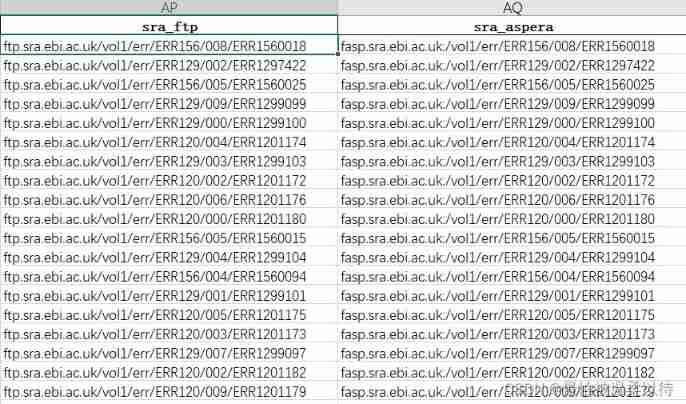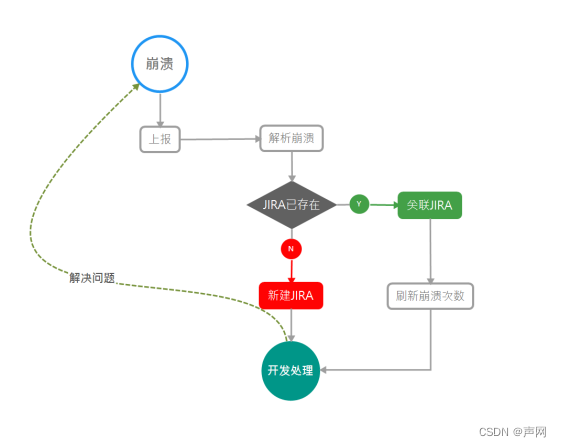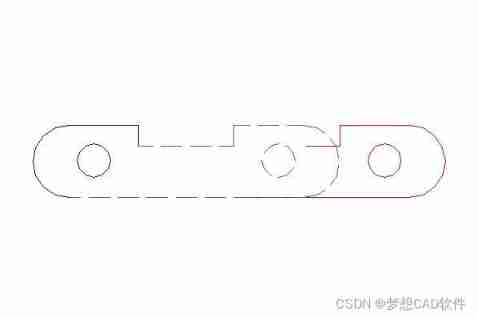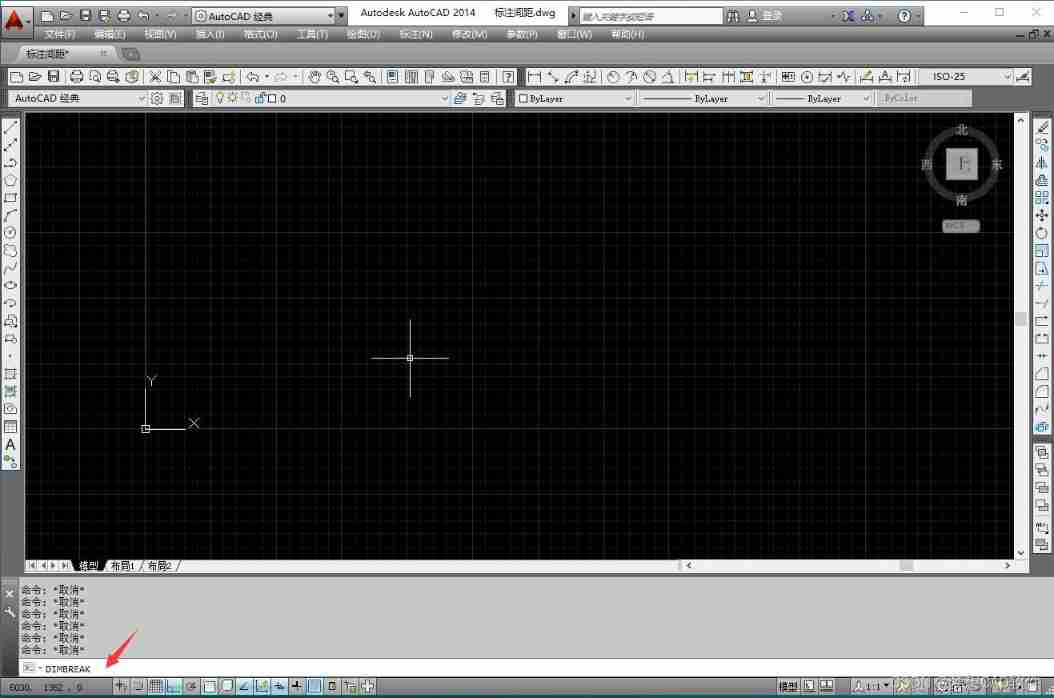当前位置:网站首页>Unity ugui source code graphic
Unity ugui source code graphic
2022-07-05 04:57:00 【OldMan_ sjc】
Graphic
How does it bring us UI Displayed on the screen
Post a simple example
using System.Collections;
using System.Collections.Generic;
using UnityEngine;
public class MyGraphic : MonoBehaviour
{
public Texture texture;
// Start is called before the first frame update
void Start()
{
Mesh mesh = new Mesh();
mesh.Clear();
mesh.SetVertices(new List<Vector3>() { new Vector3(0, 0), new Vector3(0, 100), new Vector3(100, 100), new Vector3(100, 0) });
mesh.SetUVs(0, new List<Vector2>() { new Vector2(0, 0), new Vector2(0, 1), new Vector2(1, 1), new Vector2(1, 0) });
mesh.SetTriangles(new List<int>() { 0, 1, 2, 2, 3, 0 }, 0);
mesh.RecalculateBounds();
CanvasRenderer canvasRenderer = gameObject.AddComponent<CanvasRenderer>();
canvasRenderer.SetMesh(mesh);
canvasRenderer.materialCount = 1;
canvasRenderer.SetMaterial(Canvas.GetDefaultCanvasMaterial(), 0);
canvasRenderer.SetTexture(texture);
}
}
The effect is as follows :
We used CanvasRenderer, Simple setup Mesh,Material,Texture The picture is displayed .
CanvasRenderer : A component that will render to the screen after all normal rendering has completed when attached to a Canvas. Designed for GUI application.
Graphic It is through CanvasRenderer take UI Displayed on the screen , Specifically Graphic Where is it set up Mesh,Material,Texture You can see the following code .
Graphic Code logic
First of all Graphic Of OnEnable
protected override void OnEnable()
{
base.OnEnable();
// find parent first active And enabled Of canvas
CacheCanvas();
// GraphicRegistry take Graphic and canvas Stored in the Dictionary<Canvas, IndexedSet<Graphic>> m_Graphics in
GraphicRegistry.RegisterGraphicForCanvas(canvas, this);
#if UNITY_EDITOR
GraphicRebuildTracker.TrackGraphic(this);
#endif
if (s_WhiteTexture == null)
s_WhiteTexture = Texture2D.whiteTexture;
// take Layout, Vertices, Materials Set to dirty state
SetAllDirty();
}
OnEnable Simply do some initialization , And then we did SetAllDirty, This function will Layout, Vertices, Materials Set to dirty state , Here we mainly look at the right Vertices, Materials To deal with , Both call
// CanvasUpdateRegistry Responsible for graphic Add entry IndexedSet<ICanvasElement> m_GraphicRebuildQueue In the list
CanvasUpdateRegistry.RegisterCanvasElementForGraphicRebuild(this);
In this step ,CanvasUpdateRegistry Instantiate and execute in the constructor
// Event that is called just before Canvas rendering happens.
// This allows you to delay processing / updating of canvas based elements until just before they are rendered.
Canvas.willRenderCanvases += PerformUpdate;
PerformUpdate The function will be used every time Canvas Before rendering .
private void PerformUpdate()
{
......
m_PerformingGraphicUpdate = true;
for (var i = (int)CanvasUpdate.PreRender; i < (int)CanvasUpdate.MaxUpdateValue; i++)
{
for (var k = 0; k < m_GraphicRebuildQueue.Count; k++)
{
try
{
var element = m_GraphicRebuildQueue[k];
if (ObjectValidForUpdate(element))
element.Rebuild((CanvasUpdate)i);
}
catch (Exception e)
{
Debug.LogException(e, m_GraphicRebuildQueue[k].transform);
}
}
}
for (int i = 0; i < m_GraphicRebuildQueue.Count; ++i)
m_GraphicRebuildQueue[i].GraphicUpdateComplete();
m_GraphicRebuildQueue.Clear();
m_PerformingGraphicUpdate = false;
......
}
This function traverses m_GraphicRebuildQueue, And execute Rebuild Method ,GraphicUpdateComplete Method .
// whenever Vertices, Materials by dirty state , Go to UpdateGeometry,UpdateMaterial
public virtual void Rebuild(CanvasUpdate update)
{
if (canvasRenderer == null || canvasRenderer.cull)
return;
switch (update)
{
case CanvasUpdate.PreRender:
if (m_VertsDirty)
{
UpdateGeometry();
m_VertsDirty = false;
}
if (m_MaterialDirty)
{
UpdateMaterial();
m_MaterialDirty = false;
}
break;
}
}
// UpdateGeometry The function will eventually call DoMeshGeneration
private void DoMeshGeneration()
{
if (rectTransform != null && rectTransform.rect.width >= 0 && rectTransform.rect.height >= 0)
OnPopulateMesh(s_VertexHelper);
else
s_VertexHelper.Clear(); // clear the vertex helper so invalid graphics dont draw.
var components = ListPool<Component>.Get();
GetComponents(typeof(IMeshModifier), components);
for (var i = 0; i < components.Count; i++)
((IMeshModifier)components[i]).ModifyMesh(s_VertexHelper);
ListPool<Component>.Release(components);
s_VertexHelper.FillMesh(workerMesh);
canvasRenderer.SetMesh(workerMesh);
}
protected virtual void UpdateMaterial()
{
if (!IsActive())
return;
canvasRenderer.materialCount = 1;
canvasRenderer.SetMaterial(materialForRendering, 0);
canvasRenderer.SetTexture(mainTexture);
}
You can see in the UpdateMaterial When Graphic Meeting SetMaterial and SetTexture, stay DoMeshGeneration Meeting SetMesh.
Through the above process ,Graphic will mainTexture It's on the screen .
边栏推荐
- Group counting notes (1) - check code, original complement multiplication and division calculation, floating point calculation
- UE4/UE5 虚幻引擎,材质篇,纹理,Compression and Memory压缩和内存
- Download the details and sequence of the original data access from the ENA database in EBI
- 2020-10-27
- Redis has four methods for checking big keys, which are necessary for optimization
- On-off and on-off of quality system construction
- Research and investment forecast report of adamantane industry in China (2022 Edition)
- 2022 thinking of mathematical modeling C problem of American college students / analysis of 2022 American competition C problem
- 2022 thinking of mathematical modeling a problem of American college students / analysis of 2022 American competition a problem
- 中国聚氨酯硬泡市场调研与投资预测报告(2022版)
猜你喜欢

3dsmax scanning function point connection drawing connection line

XSS injection
![Rip notes [rip three timers, the role of horizontal segmentation, rip automatic summary, and the role of network]](/img/e7/f699ee982ea325b8d04f8bd467a559.jpg)
Rip notes [rip three timers, the role of horizontal segmentation, rip automatic summary, and the role of network]

Understand encodefloatrgba and decodefloatrgba

Download the details and sequence of the original data access from the ENA database in EBI

2021 huashubei mathematical modeling idea + reference + paper

質量體系建設之路的分分合合

AutoCAD - stretching

AutoCAD -- dimension break

Séparation et combinaison de la construction du système qualité
随机推荐
This article is good
UE 虚幻引擎,项目结构
【acwing】528. cheese
Solutions and answers for the 2021 Shenzhen cup
Forecast report on research and investment prospects of Chinese wormwood industry (2022 Edition)
Wan broadband access technology V EPON Technology
AutoCAD - Document Management
AutoCAD - feature matching
Leetcode word search (backtracking method)
Rip notes [rip message security authentication, increase of rip interface measurement]
【acwing】837. Number of connected block points
Detailed explanation of the ranking of the best universities
AutoCAD - continuous annotation
Introduction to JVM principle and process
54. Spiral matrix & 59 Spiral matrix II ●●
AutoCAD - workspace settings
django连接数据库报错,这是什么原因
[ideas] 2021 may day mathematical modeling competition / May Day mathematical modeling ideas + references + codes
AutoCAD - isometric annotation
Unity shot tracking object